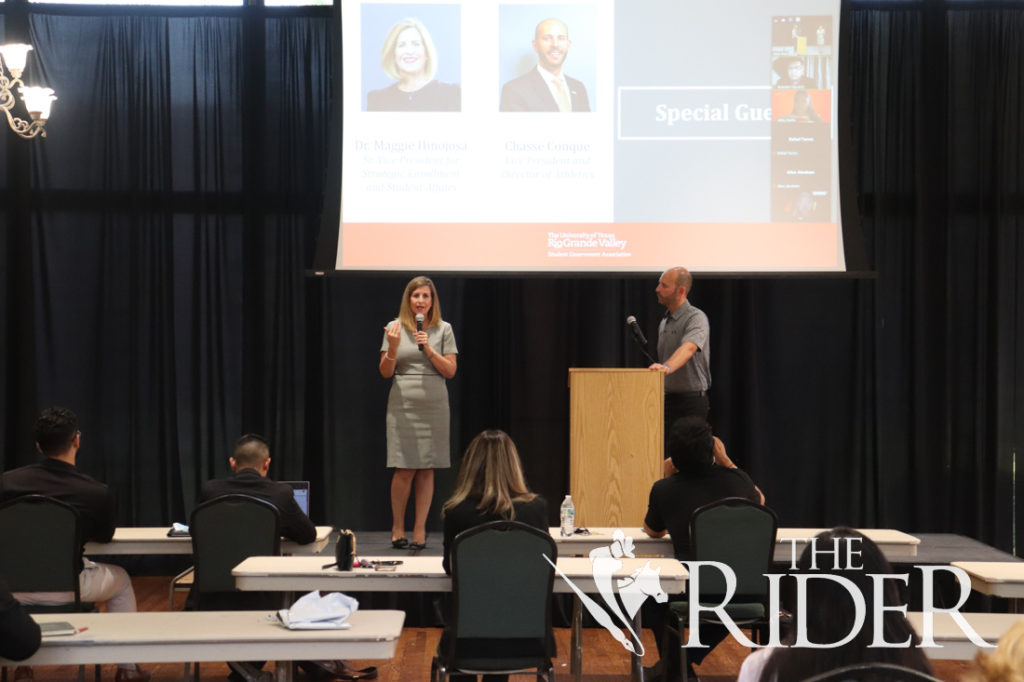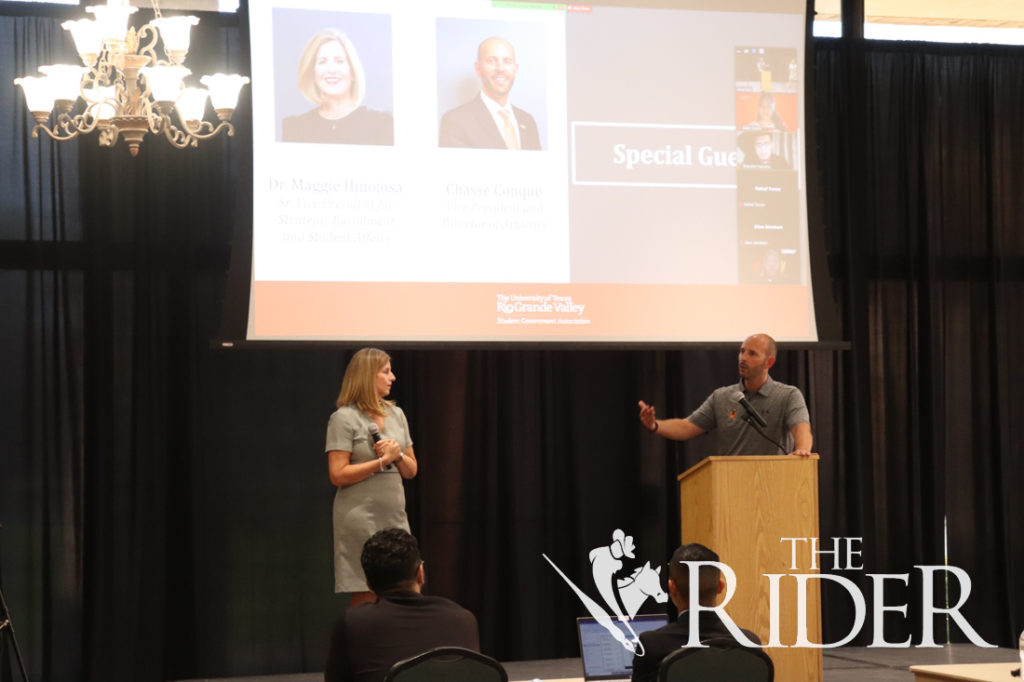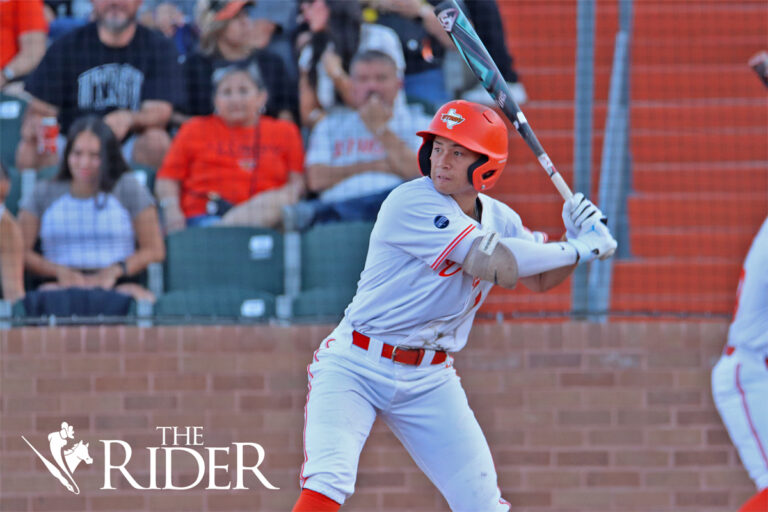
Chasse Conque, vice president and director of Athletics, and Maggie Hinojosa, senior vice president for Strategic Enrollment and Student Affairs, present a proposed referendum to the Student Government Association Aug. 31.
The Student Government Association will establish a committee for a special election within six to eight weeks for a student body vote on the proposed referendum, which would increase the Intercollegiate Athletics Fee up to $315 per student.
Currently, this fee is $15 per credit hour capped at 12 hours. However, with the proposed increase of $11.25 per credit hour capped at 12 hours, a new student could pay as much as $315.
The Rider contacted the referendum sponsors, Chasse Conque, vice president and director of Athletics, and Maggie Hinojosa, senior vice president for Strategic Enrollment and Student Affairs, to learn more details about the proposal.
Conque said four years after it is fully implemented, the proposed increase to the Intercollegiate Athletic Fee is estimated to generate $7 million to $7.5 million in revenue.
This increase will also offer 500 opportunities for student involvement, according to documents provided by the SGA to The Rider.
Conque explained that this would include student employment opportunities aside from the expansion of the sports, band and spirit programs.
“When you add the expansion of all these programs, there’ll be even more student employment opportunities, managers, our student athletic trainers,” he said. “Now we’ll be able to expand that program on the academic side. And so, all of this gives our students what I would call an expanded laboratory, not only to be able to work and be employed, but at the same time be able to add value to the curriculum and the learning in the classroom that can then carry over into these programs that we’re looking at starting.”
Conque also mentioned that about 40% to 45% of the fee would go directly back to students within these programs.
“It’s to support scholarships and stipends, all the necessary things that they’re going to need, instruments, obviously equipment, and so there’s a huge, huge piece of this that will directly impact the students,” he said.
Aside from the athletics fee, external revenue such as corporate partnerships, sponsorships, ticket sales, NCAA and WAC distributions also fund athletic scholarships.
Conque said the unique thing about the athletic programs is that most of its athletes are on partial scholarships.

“We have a few full scholarship student athletes, but we also have a lot of student athletes on partial scholarships,” he said. “And so we take 125 scholarships, and stretch those over a cohort of about 275.”
The athletics program cannot use any general education or tuition dollars to fund these scholarships.
Hinojosa said over 51% of students who receive financial aid pay no out-of-pocket costs and that number is not expected to change with the increased fee.
Students who are part of the UTRGV Guaranteed Tuition and Fees program will not have to pay this fee increase since the program ensures the cost of tuition and mandatory fees will not increase during the guaranteed period.
About 20% of the student body is considered to be outside the tuition guarantee.
Conque stated that the plans for a partnership between UTRGV and the City of Pharr Natatorium were underway when he arrived at the university in August 2019.
“And it’s a phenomenal facility, and it’s gonna be a great benefit to the Valley,” he said. “It’s going to be a great benefit to the city of Pharr, but at the same time also UTRGV. And then, as you shift gears, and you talk about the future of possibly women’s swimming and diving, it’s going to be a state-of-the-art facility for our young women to be able to train and compete. And in a place that we’ll be really proud to say it’s, it’s one of our homes for our programs.”
Conque also explained that once the proposal is fully implemented, the recruitment of students will begin locally.
Currently, 30% of UTRGV student athletes are from the Rio Grande Valley.
“We always start recruiting prospective student athletes, we always start at home,” Conque said. “We always start here in the region. Our coaches are committed to that. All of our programs are committed to that.
“Let’s put the marching bands and spirit to the side and let’s just talk sports. There’ll be great opportunities for us to continue to recruit here in the region. So, adding those programs is certainly going to impact potential new students and student athletes from the Valley. We’ve got great diversity in our athletics department. Tremendous diversity.”
He said the next step in the SGA’s referendum policy would be to set up an elections committee, and Hinojosa’s division will work with the committee to conduct town hall meetings.
“There will be formal town halls, but there are also going to be a lot of other educational Q&A sessions that we’re going to do as we lead up to the vote over the next six to eight weeks.”
CLARIFICATION: The 20% of students outside of the tuition guarantee would not pay the increase to the fee until 2025 if they are still enrolled in their current level.





